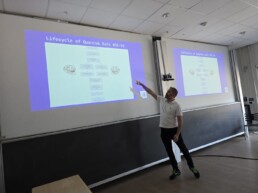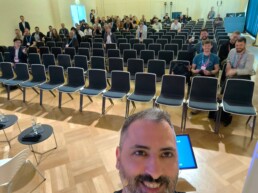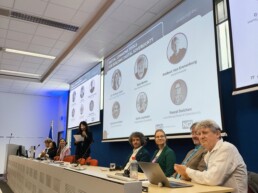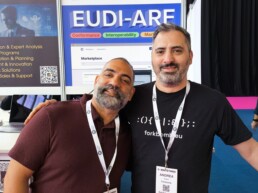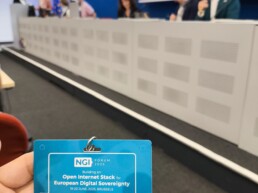
Verifiable Credentials for Academic Institutions


Coach Name
Juan Juan
EU Organization
Forkbomb BV (Netherlands)
Members
- Andrea D’Intino
- Puria Nafisi Azizi
- Denis Roio
- Matteo Cristino
- Ennio Donato
- Giovanni Abbatepaolo
- Micol Salomone
Fun fact: While “Forkbomb” is a category of software virus, some people know “The Forkbomb” to be an 11 characters virus, able to crash any Linux machine: :(){ :|:& };:
The Forkbomb was first written by our co-founder Denis “Jaromil” Roio, who also wrote a paper about it (see: https://jaromil.dyne.org/journal/forkbomb_art.html ). The Forkbomb enjoyed some degree of popularity, leading to people getting it tattoed in various parts of their bodies.
CA Organization
University of British Columbia (Canada)
Members
- Prof. Victoria Lemieux
Project Overview
DIDroom simplifies how universities issue and verify digital credentials using W3C Verifiable Credentials (VCs). In partnership with the University of British Columbia (UBC), the project created and piloted secure, privacy-preserving credential issuance and verification flows for the university’s Summer School program.
Students used the DIDroom Wallet app to receive and store verifiable credentials for course enrollment and participation, while UBC staff used a companion verifier tool to confirm eligibility and attendance. The system reduced manual checks and paperwork, delivering a smoother and more secure onboarding experience.
The project also produced a white-labeled version of the DIDroom Wallet customized for UBC, proving that decentralized identity solutions can be easily tailored and deployed across institutions.
Methods and approaches
Interoperable Digital Identity Standards
DIDroom integrated W3C-VC 2.0, OpenID4VCI, and OpenID4VP 1.0 protocols into its platform, ensuring interoperability with both European and North American systems. This technical foundation allows institutions to issue and verify credentials across borders securely and consistently.
User-Centric Design and Institutional Integration
The project adopted a participatory design process involving UBC staff and students to ensure trust, usability, and compliance. Insights gathered from interviews and field testing directly shaped the wallet’s interface, verification flows, and documentation, aligning technology with real-world administrative needs.
Key Achievements
Credential Pilot Implementation
Implemented and piloted two verifiable credential issuance and verification flows at UBC Summer School (≈40 active users).
White-Labeled DIDroom Wallet
Developed a white-labeled version of the DIDroom Wallet customized with UBC branding.
Open-Source Release
Released open-source code and documentation for W3C-VC 2.0 and OpenID4VCI/4VP integration.
Web-Based Verifier
Transitioned to a web-based verifier, simplifying credential validation processes.
Public Webinars & Training
Conducted three public webinars on credential configuration, deployment, and third-party integration.
Community & Cryptography Contributions
Engaged with open-source communities and contributed updates to the Zenroom cryptographic engine.
Impact & Results
Scientific Impact
Advancing experimentation with W3C-VC 2.0 and OpenID standards.
Economic Impact
Offering a white-label wallet solution for universities and institutions, reducing deployment costs.
Societal Impact
Improving student experience through simplified, privacy-respecting digital identity processes.
Publications and Open-Source Contributions
- Website: https://didroom.com
- Wallet app: https://didroom.com/apps/
- GitHub repositories:
- Presentation: UBC Summer School Pilot Slides
- Webinar series: https://forkbomb.solutions/webinars/
- Documentation:

Future directions
Forkbomb BV and UBC plan to extend the collaboration by deploying the UBC-branded DIDroom Wallet long-term and testing interoperability with additional European universities. The team will continue contributing to open-source identity standards and explore the commercialization of white-label identity solutions for academic and institutional use.

